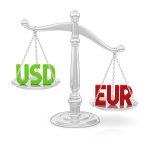Japanese Yen Rebounds Amid Rising Geopolitical Tensions and Softening Dollar
The Japanese Yen (JPY) is regaining ground as it edges further away from its recent four-week low against the US Dollar (USD) during Friday’s European session. The recovery appears to be driven by a mix of safe-haven inflows, expectations of future Bank of Japan (BoJ) tightening, and a modest pullback in the US Dollar from near one-month highs.
Renewed geopolitical tensions have triggered a wave of risk-off sentiment in global markets, prompting investors to seek refuge in traditionally safer assets like the Yen. Simultaneously, an uptick in Japan’s household spending data supports the narrative that domestic demand may continue to fuel inflation, which could pave the way for another BoJ rate hike in 2025. These developments together have added to the JPY’s relative strength on the day.
Mixed Japanese Data Fuels BoJ Policy Tightening Speculation
A key catalyst for the Japanese Yen’s recent uptick is the release of encouraging household spending data. Japan’s Ministry of Internal Affairs and Communications reported a 0.4% month-over-month rise in March and a 2.1% increase year-over-year—both surpassing market expectations. These figures offer a glimmer of hope for Japan’s consumption-driven inflation targets, lending support to arguments in favor of more BoJ tightening down the line.
Meanwhile, the minutes from the BoJ’s March 18–19 policy meeting, released on Thursday, reaffirmed that the central bank remains open to further interest rate hikes if underlying inflationary pressures persist. This guidance aligns with recent BoJ commentary that monetary policy normalization will be gradual but steady, depending on sustained wage growth and inflation expectations.
Wage Growth Lags, Raising Concerns Over Japan’s Economic Outlook
Despite the upbeat spending data, other indicators underscore Japan’s lingering economic vulnerabilities. Real wages—adjusted for inflation—declined for the third straight month in March, falling 2.1% from a year earlier. This follows a revised 1.5% drop in February and a 2.8% fall in January. At the same time, the consumer inflation rate used to calculate real wages clocked in at 4.2% year-over-year in March, marginally below February’s 4.3%.
This persistent decline in real wages raises concerns over household purchasing power, which could eventually undermine domestic consumption and economic growth. With Japan’s Q1 Gross Domestic Product (GDP) report due next week, markets remain cautious, balancing optimism around future BoJ hikes with the reality of still-weak wage dynamics.
Japanese yen Pulls Back as Dollar Softens after Fed’s Hawkish Pause
While the Japanese side of the equation provided support for the Yen, the USDJPY pair’s downward correction is also partly attributed to a modest retreat in the US Dollar. Earlier this week, the Greenback touched a nearly one-month high after the Federal Reserve opted to hold interest rates steady continuing its hawkish pause despite global uncertainties and mixed US data.
The Fed’s stance suggests policymakers are not in a rush to cut rates, a position that initially bolstered USD demand. However, without fresh macroeconomic data from the US on Friday and in anticipation of several key speeches from Federal Open Market Committee (FOMC) members, traders appear to be locking in profits, pushing the Dollar lower intraday.
US-UK Trade Deal and US-China Talks Lift Market Sentiment
In parallel, optimism surrounding trade diplomacy continues to boost overall market sentiment. The announcement of a new US-UK trade framework and the resumption of US-China tariff negotiations in Switzerland have calmed fears of an imminent escalation in global trade conflicts. This reduces the perceived risk of a US recession triggered by protectionist policies and supports risk-on sentiment in equities and commodities.
That said, the generally upbeat tone across broader markets may cap further gains in the safe-haven Japanese Yen, especially if upcoming FOMC member speeches reiterate the Fed’s reluctance to pivot dovish. Investors will be closely watching any hints on the timeline of potential rate cuts or updates on inflation expectations.
Broader Risk Sentiment to Drive Near-Term USD/JPY Moves
Despite the JPY’s recent strength, gains could remain capped if risk appetite continues to hold firm. The Fed’s reluctance to commit to early rate cuts, combined with improving trade relations and a steadier global economic backdrop, provides a cushion for the US Dollar.
Moreover, without high-impact US data releases scheduled for Friday, investors are expected to key in on qualitative signals from Fed officials to guide short-term positioning. If the Fed maintains its cautious optimism, the USD/JPY pair could stabilize or even attempt a recovery towards the 146.00 zone—barring any major geopolitical shocks.
Short-Term Outlook: JPY Strength Faces Headwinds from Risk-On Mood
While the Japanese Yen has found fresh support from domestic data and geopolitical uncertainties, its near-term trajectory remains clouded by mixed signals. The Fed’s hawkish tone and rebounding risk sentiment globally might keep a firm lid on further JPY appreciation, especially against the US Dollar. Meanwhile, Japan’s economic data remains a double-edged sword—offering hope for BoJ action but also revealing structural challenges like wage stagnation.
Until more clarity emerges—particularly from next week’s Japan GDP print and additional commentary from BoJ and Fed officials—traders are likely to tread cautiously, capitalizing on intraday swings driven by sentiment and headlines.
Japanese yen Technical Outlook
From a technical perspective, the USD/JPY pair found strong resistance above the 146.00 mark earlier this week and has since drifted lower. The next support zone lies near 144.70–144.50, followed by the 100-day Simple Moving Average around 144.00. A sustained break below this region could trigger a deeper pullback towards the 143.20 area.
On the upside, any fresh momentum could face selling pressure near the 146.00–146.20 resistance band. A clean breakout above this could open the door for a rally toward the psychological 147.00 level, particularly if US Dollar strength returns amid hawkish Fed commentary.







